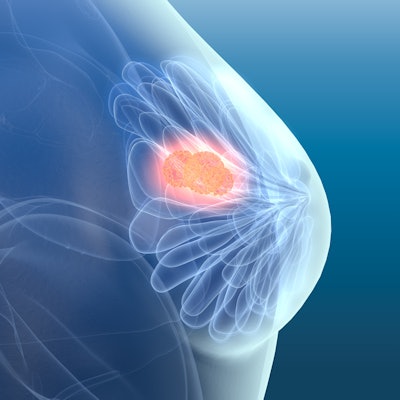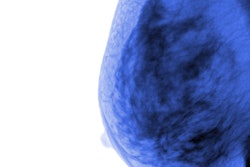
Shear-wave elastography could be useful in helping decide whether women undergoing breast screening should receive a second biopsy or excision when it comes to suspicious microcalcifications, according to research published June 11 in Ultrasound in Medicine and Biology.
A team led by Dr. Yasemin Kayadibi from Istanbul University in CerrahpaŞa in Turkey found that despite biopsy being recommended for showing suspicious microcalcifications, 2D shear-wave elastography is a "useful" method for characterizing microcalcifications that can be visualized with ultrasonography.
"We believe that shear-wave elastography may assist, when the pathologic and radiologic findings are discordant, in the decision to send a patient for a second biopsy or excision," Kayadibi and her team wrote. "We [also] believe that identifying the most pathologic area using elastography with ultrasonography is more practical and efficient in clinical practice."
About 25% of cancers with suspicious microcalcifications presented on mammography consist of ductal carcinoma in situ (DCIS).
While most DCIS cases can be diagnosed through the presence of suspicious microcalcifications on mammograms classified as BI-RADS 4 or 5, only 10% to 43% of microcalcifications that are considered suspicious and subjected to biopsy end up being diagnosed as malignant, the study authors wrote.
Stereotactic biopsy is the recommended method for assessing these microcalcifications, but the researchers noted their reported disadvantages; these include extended compression of the breast, radiation, and the requirement for expensive equipment.
To assess the value of shear-wave elastography, the team evaluated 50 patients with an average age of 43.7 years who presented with suspicious microcalcifications and without accompanying masses. The patients underwent ultrasonography and 2D shear-wave elastography before biopsy.
Out of the 50 patients, 27 malignant lesions were found, including 18 invasive ductal carcinomas, one invasive lobular, and eight DCIS. The remaining 23 lesions were found to be benign. There was a statistically significant difference between the shear-wave elastography values of malignant and benign microcalcifications.
| Diagnostic performance of shear-wave elastography for suspicious breast lesions | |||
| Malignancy | Invasiveness | High grade | |
| Sensitivity | 93% | 83% | 88% |
| Specificity | 91% | 88% | 53% |
| Positive predictive value | 93% | 94% | 44% |
| Negative predictive value | 91% | 70% | 90% |
| Area under the curve | 0.952 | 0.885 | 0.776 |
However, the authors said that biopsy remains the best option for suspicious microcalcifications that show up on mammography images.
"Additional studies are required to verify the factors influencing the decision to perform biopsy for microcalcifications, because our study was conducted with a limited number of cases," they wrote.
The team also said that more comprehensive studies with long-term follow-up are needed to support these findings.




















